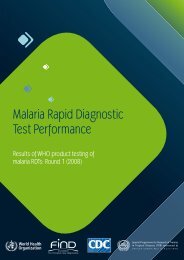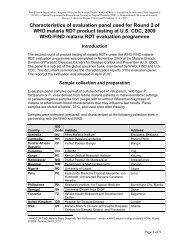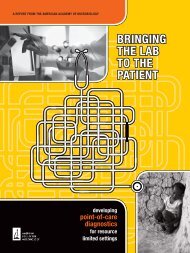MGIT TM Procedure Manual - Foundation for Innovative New ...
MGIT TM Procedure Manual - Foundation for Innovative New ...
MGIT TM Procedure Manual - Foundation for Innovative New ...
Create successful ePaper yourself
Turn your PDF publications into a flip-book with our unique Google optimized e-Paper software.
Section II: <strong>Procedure</strong> <strong>for</strong> primary isolation<br />
A. Introduction<br />
Mycobacteria Growth Indicator Tube (BBL <strong>MGIT</strong>) contains modified Middlebrook 7H9<br />
broth base. When supplemented with <strong>MGIT</strong> Growth Supplement and PANTA, it provides an<br />
optimum medium <strong>for</strong> growth of a majority of mycobacterial species. All types of specimens,<br />
pulmonary as well as extra-pulmonary (except blood), can be inoculated into <strong>MGIT</strong> <strong>for</strong><br />
primary isolation of mycobacteria. Urine specimens have not been evaluated by BD but<br />
other investigators have reported successful isolation of mycobacteria from urine specimens.<br />
Mucoid specimens are expected to contain contaminating bacteria as normal flora and must<br />
be digested (liquefaction) and decontaminated be<strong>for</strong>e inoculation. On the other hand,<br />
aseptically collected body fluids or tissue biopsies do not need to be decontaminated.<br />
However, since it is difficult to maintain sterile conditions throughout the collection of<br />
specimens, it is recommended that all specimens be decontaminated. Aseptically collected<br />
specimens need only light decontamination. Clinical specimens collected in large volumes<br />
(of more than 10 ml) require centrifugation be<strong>for</strong>e decontamination to reduce the overall<br />
volume and to concentrate mycobacteria present in the specimens into a smaller volume.<br />
After decontamination, the specimen should be centrifuged again and the sediment used <strong>for</strong><br />
preparation of smear and inoculation <strong>for</strong> culture.<br />
B. Important Safety Precautions<br />
Per<strong>for</strong>m all procedures, such as processing of specimens, smear preparation, inoculum<br />
preparation, making dilutions, inoculation of media, and subculturing in a suitable biological<br />
safety cabinet in a room dedicated <strong>for</strong> mycobacterial work. The CDC has recommended a<br />
Biosafety Level (BSL) 2 laboratory with negative air pressure and with an appropriate<br />
ventilation system <strong>for</strong> mycobacterial work . 2 More recently, the CDC has recommended that<br />
work involving manipulation of TB cultures, such as DST, be done in a BSL 3 laboratory. 61<br />
However, this work may be done in a BSL 2 laboratory providing the exhaust air from the<br />
laboratory is discharged to the outdoors, the ventilation is balanced to provide directional<br />
airflow into the room, access to the room is restricted when work is in progress, and the<br />
practices and equipment recommended <strong>for</strong> BSL-3 are followed. This includes use of proper<br />
protective gowns, gloves and respirator masks (approved by OSHA) while handling<br />
specimens and mycobacterial cultures. International Safety Standards, along with the local<br />
specifications, may also be followed.<br />
Use an appropriate mycobacterial disinfectant such as Amphyl® <strong>for</strong> cleaning the work area.<br />
The CDC states: “With so many disinfectants available, it is important to consult the product<br />
brochures to make certain the disinfectant is bactericidal <strong>for</strong> mycobacteria.” 2<br />
<strong>MGIT</strong> <strong>TM</strong> <strong>Procedure</strong> <strong>Manual</strong> 13


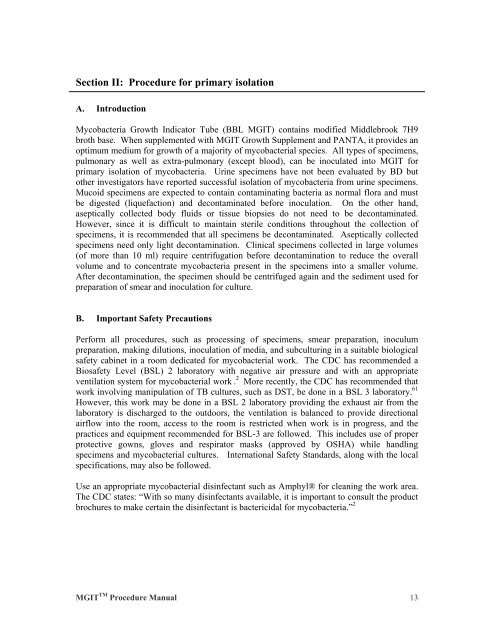

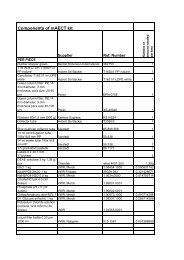
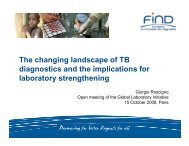
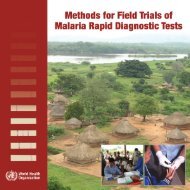
![Download in English [pdf 2Mb] - Foundation for Innovative New ...](https://img.yumpu.com/49580359/1/184x260/download-in-english-pdf-2mb-foundation-for-innovative-new-.jpg?quality=85)

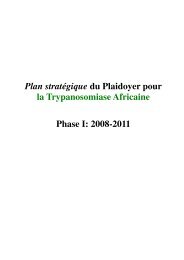
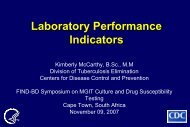
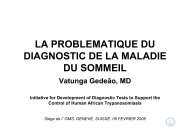
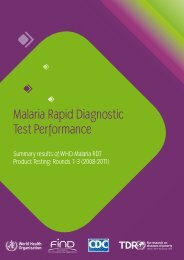
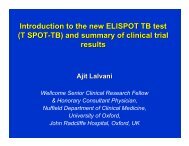
![New laboratory diagnostic tools for tuberculosis control [.pdf]](https://img.yumpu.com/43339906/1/190x135/new-laboratory-diagnostic-tools-for-tuberculosis-control-pdf.jpg?quality=85)
